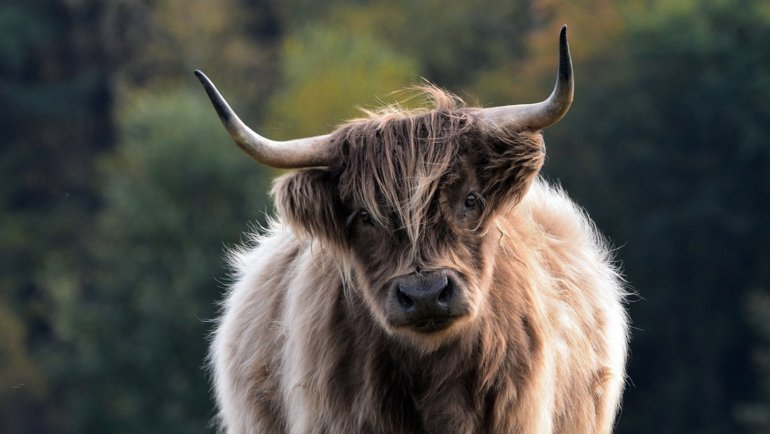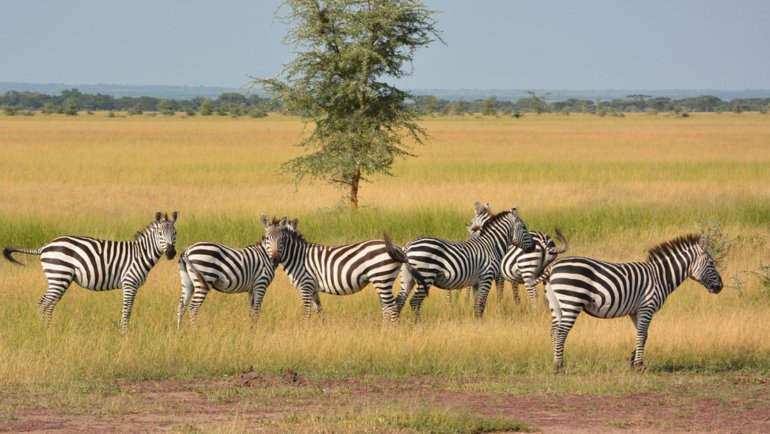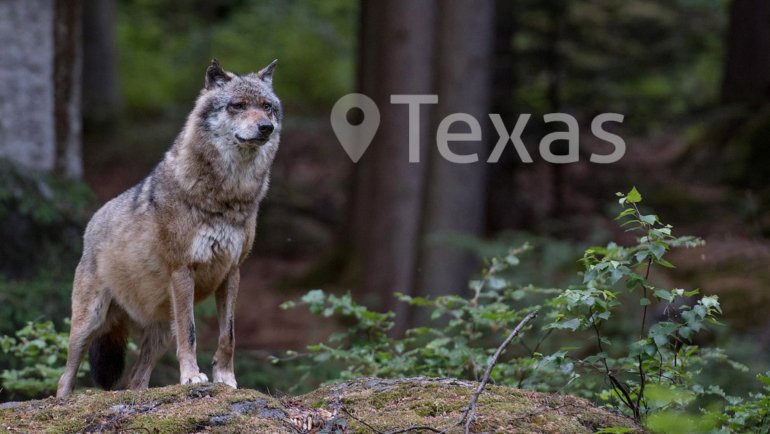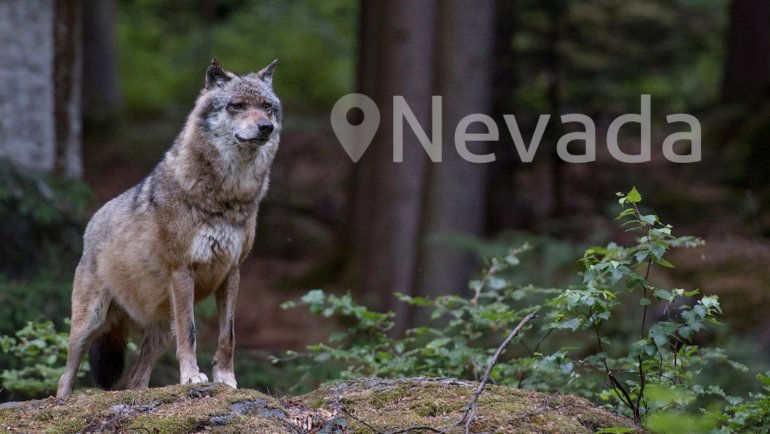Welcome to this comprehensive fact sheet about one of North America’s most iconic mammals—the bison! Often mistakenly called “buffalo,” bison have roamed the prairies, plains, and forests of North America for thousands of years.
Not only are they a crucial part of the ecosystem, but they also have a rich history that includes near extinction and an inspiring comeback. This article will delve into the biology, behavior, and conservation of this magnificent creature.
The Bison at a Glance
Classification
| Kingdom: | Animalia |
| Phylum: | Chordata |
| Class: | Mammalia (Mammals) |
| Order: | Artiodactyla |
| Family: | Bovidae |
| Genus: | Bison |
| Species: | Bison bison (American Bison), Bison bonasus (European Bison) |
Essential Information
| Average Size: | 9-12.5 ft (2.7-3.8 m) in length |
| Average Weight: | Males: up to 2,200 lbs (1,000 kg); Females: up to 1,200 lbs (544 kg) |
| Average Lifespan: | 15-25 years |
| Geographical Range: | North America (American Bison), Europe (European Bison) |
| Conservation Status: | Near Threatened (IUCN Red List) |
Species and Subspecies
There are two primary species of bison: the American Bison (Bison bison) and the European Bison (Bison bonasus). The American Bison itself has two subspecies—the Plains Bison (Bison bison bison) and the Wood Bison (Bison bison athabascae).
Key Differences:
- American Bison: Generally larger, with a more robust build. They are native to North America and are more commonly found in the United States and Canada. Their habitat primarily consists of plains, prairies, and river valleys.
- European Bison: Slightly smaller in size and native to Europe, they were once widespread but are now primarily found in isolated forests and reserves.
- Plains Bison vs. Wood Bison: The Plains Bison is smaller but more numerous and primarily lives in the grasslands of the United States and Canada. The Wood Bison is larger and darker, with a higher hump, and is mostly found in the boreal forests of Canada and Alaska.
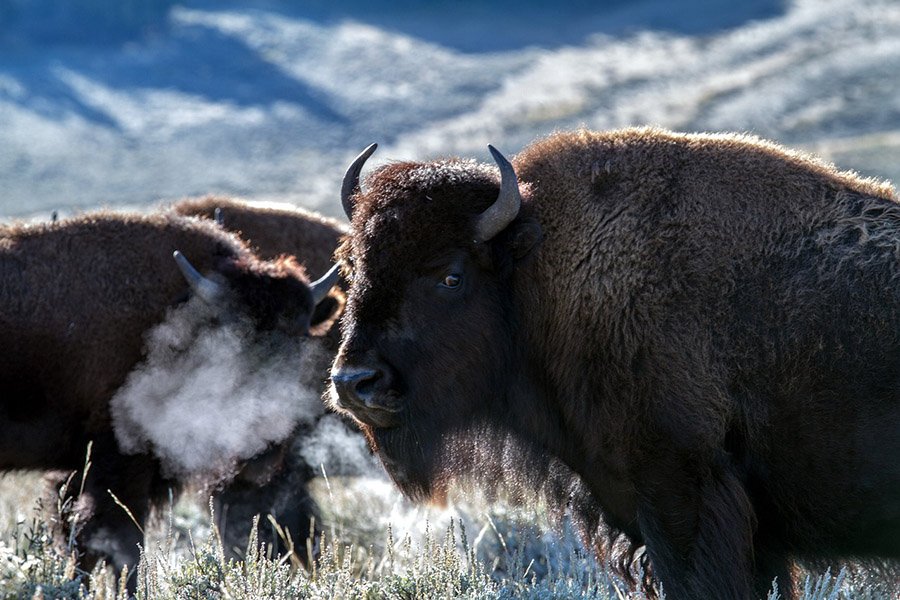
Description
The bison is a large, hoofed mammal with a distinct hump on its back, strong limbs, and a thick fur coat that varies in color from dark brown to lighter shades. Adult males are generally larger than females. Their large heads feature small, curved horns that can grow up to 2 feet (61 cm) long, which they use for fighting and foraging.
Males are notably larger than females. For instance, male American Bison can weigh up to 2,200 lbs (1,000 kg), while females usually weigh around 1,200 lbs (544 kg). The males also have larger horns and a more pronounced hump, which is a muscle mass used to support their heavier heads.
The bison’s hump is made up of muscles supported by long vertebrae, which allows them to use their heads effectively for plowing through snow to forage in winter.
Habitat and Distribution
American Bison: Primarily found in North America, they inhabit a variety of ecosystems, including prairies, plains, and river valleys. While they once roamed freely across a vast range, their habitat has been severely reduced, mostly limited to national parks and reserves like Yellowstone.
European Bison: These are primarily found in isolated woodland areas in Europe, most notably in Poland’s Białowieża Forest. They have been reintroduced into other parts of Europe as part of conservation efforts.
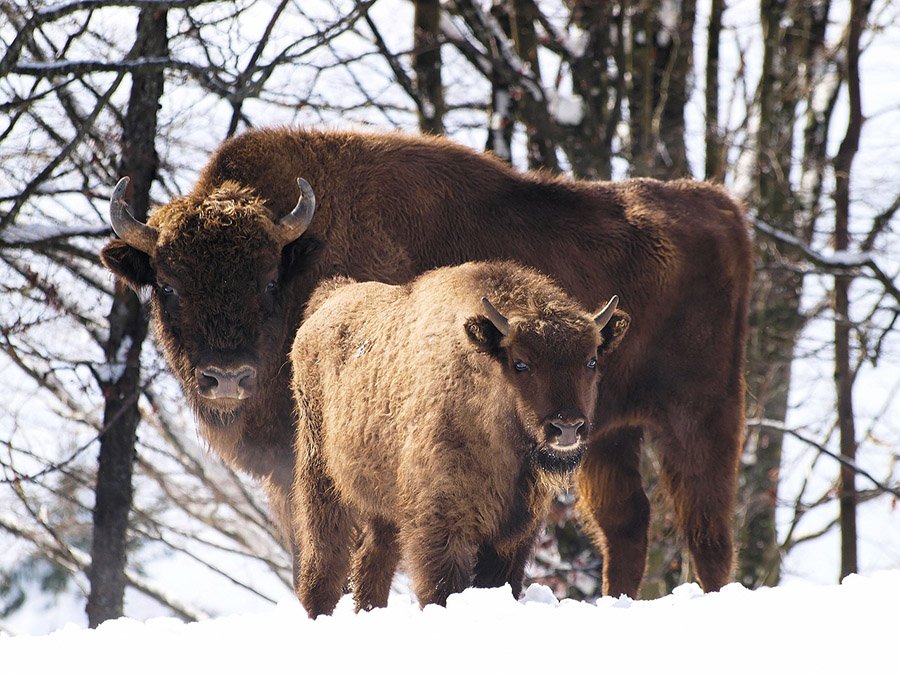
Behavior
Bison are predominantly diurnal, being most active during the morning and late afternoon. Both European and American bison live in herds, but the social structure can be quite complex.
Herds are usually segmented by gender. Female herds consist of adult females and their young, while male herds are generally smaller and consist only of males. During the breeding season, known as the rut, males join female herds and compete for mates.
Bison communicate through a range of vocalizations like grunts and snorts. Physical cues, such as posture and horn displays, are also important, especially during the rut. They also have keen senses of smell and hearing, which they use to communicate and perceive threats.
Bison are not particularly territorial but will travel extensively to find food, often following a seasonal migration pattern to access fresh grazing areas.
Interestingly, bison use wallows—depressions in the ground—to bathe in dust or mud. This not only helps them regulate body temperature but also removes parasites and soothes irritated skin.
Diet and Feeding Behavior
Bison are herbivores, primarily grazing on grasses and sedges. During the summer, they consume large quantities of fresh grass, while in the winter, they resort to eating dried grasses and other available plant materials. Bison also consume shrubs and woody plant leaves to supplement their diet.
Bison are efficient grazers. They feed primarily during the cooler parts of the day, using their strong neck muscles to pull plants from the ground or to sweep away snow that is covering vegetation. The herds often move as they graze, allowing the vegetation in previously grazed areas to recover.
Predators
Adult bison have few natural predators due to their size and formidable defenses. However, wolves and grizzly bears are known to prey on bison, typically targeting the young, old, or sick individuals in the herd.
In earlier times, Native American tribes and later European settlers hunted bison in large numbers, contributing to the near-extinction of the species.
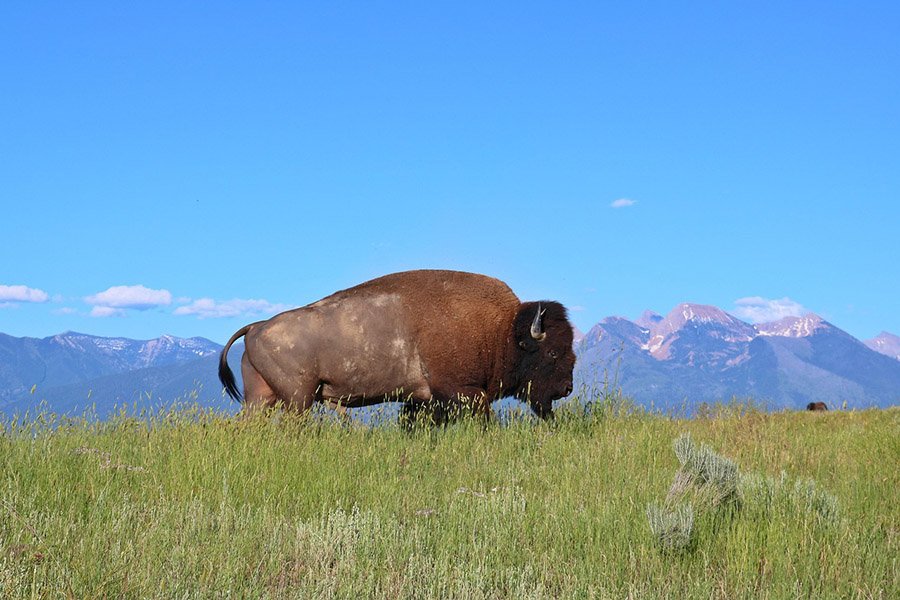
Reproduction and Life Cycle
Bison have a polygynous mating system where dominant males mate with multiple females. The breeding season, known as the rut, occurs from late July through August.
After a successful mating, the female undergoes a gestation period of approximately 285 days, culminating in the birth of a single calf, although twins are rare but possible.
A female bison usually gives birth to one calf per year. The calf is able to stand and walk shortly after birth, and while it is cared for and nursed by its mother, it will start grazing on grass within a month. Calves are highly vulnerable to predation and rely on the herd for protection, often standing at the center of the group to minimize risk.
By focusing on these crucial life stages, conservationists aim to promote sustainable herd growth and maintain genetic diversity among bison populations.
Conservation and Threats
The American bison and the European bison are both currently listed as “Near Threatened” by the IUCN Red List.
Bison face multiple threats including habitat loss due to agricultural expansion and human encroachment, competition with livestock for food, and diseases transmitted by domestic cattle. Historically, overhunting was a significant factor that led to their near-extinction.
Numerous conservation programs and reserves have been established to protect bison. Reintroduction programs have also been implemented to bring bison back to their native habitats. National parks like Yellowstone provide a sanctuary where bison can live, breed, and graze freely.
Fun Facts
- A group of bison is known technically as an ‘obstinacy.’
- Bison are excellent swimmers and can cross rivers and streams effortlessly.
- Despite their massive size, bison can run up to 35 mph (56 km/h).
- Bison have a keen sense of smell and hearing, although their eyesight is relatively poor.
- Contrary to popular belief, bison are not true buffalo. The term “buffalo” more accurately describes species found in Africa and Asia.
Frequently Asked Questions
Is a bison the same as a buffalo?
No, although the terms are often used interchangeably in North America, bison and buffalo are different species. Buffaloes are native to Africa and Asia, while bison are found in North America and Europe.
How dangerous are bison?
While generally peaceful, bison are wild animals and can be unpredictable. They are capable of running three times faster than humans and are very protective of their young. Caution and distance are advised when observing these animals.
What do bison eat in the winter?
In winter, bison primarily consume dried grasses and whatever other plant materials are available, including twigs and shrubs.
Can you ride a bison like a horse?
It is strongly discouraged to attempt riding a bison. They are wild animals and not domesticated like horses. Trying to ride a bison is dangerous and stressful for the animal.
Are bison endangered?
The American bison is listed as “Near Threatened,” and their populations are stable but reduced compared to historical numbers. The European bison is listed as “Near Threatened” as well, with ongoing efforts to reintroduce them into the wild.
